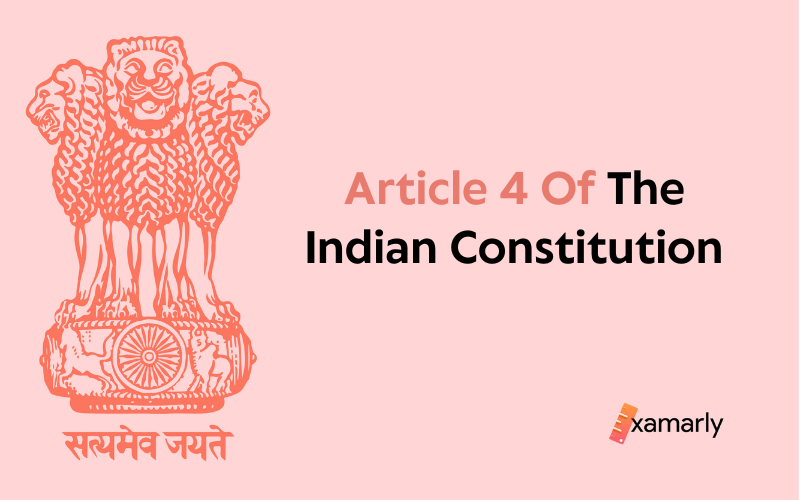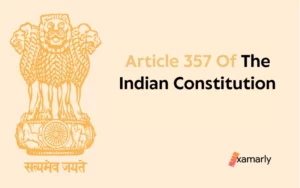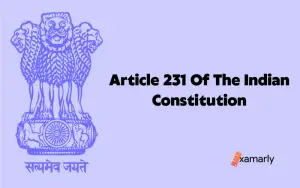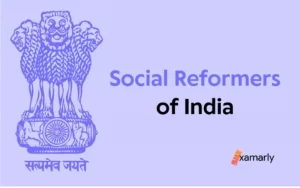Articles 1, 2, and 3 are pertinent to understanding Indian states and union territories. In relation to the earlier articles, Article 4 of the Indian Constitution deals with the settlement of boundary disputes in India.
Let us look at the purposes of article 4 in the Indian Constitution and how states and union territories evolved. Article 4 is covered under the UPSC Syllabus of Indian Polity.
- What Is Article 4 Of The Indian Constitution?
- Idealism
- Purpose
- Significance
- Majority By Ordinary Legislation
- Passed By A Simple Majority
- Amendment Of The Constitution
- Settlement Of A Boundary Dispute
- Evolution Of States And Union
- State And Union Territory In Article 4
- Interrelation With Articles 2 And 3
- Conclusion
- FAQs
What Is Article 4 Of The Indian Constitution?
Whenever there is an incidental provision to alter the boundary of a state, article 4 of the Indian constitution is invoked. Two factors are specified here:
- Any law referred to in Articles 2 or 3 of this Constitution must include the necessary clauses to amend the First Schedule in order to give effect to its provisions. It may also include any incidental or consequential clauses that Parliament deems necessary.
- Concerning Article 304, none of the aforementioned laws shall be deemed to be amendments to this Constitution.
Idealism
Article 4 as a subjunctive addition to the Indian Constitution gives the parliament more authority. It has been stated that article 4’s corresponding duty is to comprehend the elements of common law so as to assess the degree of its majority. As a result, it has been explicitly stated that the purpose of it is to resolve a boundary dispute. It has been overstated that, post the establishment of previous articles, the state’s boundaries can be changed depending on whether they should be widened or shrunk. Therefore, it is expected to provide a proper and ideal resolution of a boundary dispute.
Purpose
According to the constitutional amendments, both of the changes made by the articles must be included in the ongoing reformation process. The consequential, incidental, and supplemental provisions of both of these articles must therefore be approved by a simple majority in order for Article 4 of this constitution to be amended. The next step must be configured by implementing those changes first since these two articles have been included by specific laws and regulations for the probationary changes of states and territories.
Significance
It is possible to interpret the amendment to this constitution’s article 4 as referring to all of the laws and regulations covered by both articles. The following changes, such as the renaming of the states, should be taken into account by article 4 in accordance with the constitution’s amendments. Additionally, the number of seats designated for Rajya Sabha members for each state can be changed or corrected with the help of this article. Additionally, the significance is that the Parliament should pass all changes with a simple majority in order for them to be implemented.
Majority By Ordinary Legislation
The Indian Constitution’s Articles 2 and 3 give the Parliament the power to steer the States’ autonomy and dimension. These articles have been proposed with a few modifications and all parliament-made decisions. As a result, Article 4 can only establish this substance if it is declared necessary by a majority of ordinary laws.
Passed By A Simple Majority
The Parliament bodies are also given information about the procedure for implementing constitutional amendments. In this situation, responsibility includes controlling the ensuing changes and their specifications. As a result, a simple majority of Parliament members must approve the overall amendments to article 4. The process can continue once the majority determines that the earlier modifications to the laws and regulations in both articles should be implemented.
Also Read: Check out the linked articles from the table given below which will help you in your UPSC Preparation.
Amendment Of The Constitution
The first schedule and the fourth schedule are then followed by the amendment of the constitution. The names of the states that make up the Union of India are included in this context’s discussion of the first schedule’s modification. The fourth schedule of this amendment also includes the number of Rajya Sabha representatives who have been appointed for each state. Therefore, the purpose of amending Article 4 of this constitution is to establish the modifications made to the provisions in the next two articles.
Settlement Of A Boundary Dispute
The Indian Constitution allows the Parliament to impose its authority and change the state boundaries. The assumed duties and powers of the state government include the assessment of internal law and regulations to facilitate this authority. As a result, they have the ability to alter the size of the states by either increasing or decreasing their area. Additionally, it covers the resolution of a boundary dispute by evaluating the modifications to state legislation and legislature.
Evolution Of States And Union
The independent existence and evolution of a state are dependent to a large extent on the clauses of Article 4. The union and the states are each supposed to have unique qualities that set them apart from one another. It allows for the existence of these unique characteristics while also providing a ground for any modifications and additions to their nature.
State And Union Territory In Article 4
The Indian government has the authority to decide whether to expand or suspend its ability to facilitate power in the state and union territories. In this context, the earlier articles referred to laws and legislation that have been altered. This article is supposed to incorporate those changes into the probationary account so that the Parliament itself can decide on the internal factors of significance.
Therefore, it has been set up so that the Parliament itself, using its interpretation of Articles 2 and 3, can decide on the fluctuation and modification of the state and union territory. However, in some instances, only a small number of members objected to this strategy, arguing that the state government should have the power to negotiate or change its laws.
Interrelation With Articles 2 And 3
To establish the potential significance and authority in terms of the state legislature, the amendment to the constitution is intended to represent the consequential changes and provisions included in Parliament. In this case, the legislature of the states already mentioned in both articles can only be put into effect if the following changes to Article 4 are approved by a simple majority. Therefore, in order to establish and change the consequential provisions, article 4 is responsible for adding up these changes in the amendments of the first and fourth schedules.
Conclusion
Article 4 of the Constitution is crucial to the territorial and administrative functioning of Indian territory and democracy. It is one of the most fundamental Indian articles that all UPSC candidates must learn.
FAQs
What Is The Core Purpose Of Article 4?
The main purpose is to provide the foundation for the alteration of territorial boundaries.
Why Is Article 4 A Settlement Of A Boundary Dispute?
It covers the resolution of a boundary dispute by evaluating the modifications to state legislation and legislature.
Why Is It Called An Evolution Of States And Unions?
It is related to the evolution of states and union territories since the areas have undergone boundary modification in accordance with it.






